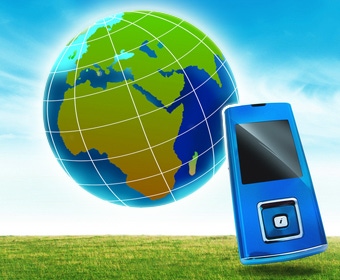Half of the world’s population (3.8 billion people) will be connected to mobile internet by 2020, according to a report published by the international mobile operator association GSMA. The report, which focuses on digital inclusion and efforts made to connect ‘offline’ populations, said mobile web users in developing countries will double from 1.5 billion in 2013 to 3 billion in the next five years.
November 6, 2014

Half of the world’s population (3.8 billion people) will be connected to mobile internet by 2020, according to a report published by the international mobile operator association GSMA. The report, which focuses on digital inclusion and efforts made to connect ‘offline’ populations, said mobile web users in developing countries will double from 1.5 billion in 2013 to 3 billion in the next five years.
Unsurprisingly, almost all the additional mobile internet subscribers will come from the developing world, with the number of new users in developed countries estimated only to grow from 0.7 billion to 0.8 billion. In sub-Saharan Africa 17% of the population were mobile web users in 2013, but the figure is apparently set to rise to 37% by 2020.
“Our new findings underline how mobile is now the gateway to the internet for billions of citizens across the world, and will be responsible for connecting millions of currently ‘offline’ global citizens to the internet in the years to 2020 and beyond,” Director General of the GSMA, Anne Bouverot, said.
According to the GSMA report, many users in developing countries are still connecting to the internet via 2G, with 60% of users in Sub-Saharan Africa using the technology for web access. However, it forecasts that by 2020 the total number connecting via 2G will half to about 21%.
GSMA and Mozilla recently announced a partnership under which the two intend to accelerate the creation of localised web content to ensure new users will find the internet relevant to them. “At present, there’s a shortage of digital content that has a sufficient understanding of specific cultural contexts, local conditions and the needs of local populations,” Mozilla said in a recent blog post. “It’s one of the reasons Mozilla is teaming up with the GSMA to explore ways to catalyse the creation of locally relevant content and unlock the promise of the web for the next wave of users.”
“Developing innovative ways to accelerate digital inclusion in the form of affordable mobile internet access is now a key focus for the GSMA, its operator members and the broader mobile industry ecosystem,” Bouverot said.
Mozilla said in the next six to 12 months the two partners will explore projects focused on low-cost smartphones, digital literacy and local content. Initial field tests are underway in Bangladesh, Kenya, Brazil and India.
About the Author(s)
You May Also Like








.png?width=300&auto=webp&quality=80&disable=upscale)


_1.jpg?width=300&auto=webp&quality=80&disable=upscale)


.png?width=800&auto=webp&quality=80&disable=upscale)